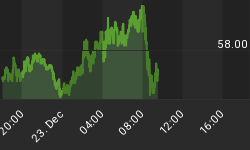This is the question of the hour everyone seems to be asking. Has China topped? Is the great Chinese economic "miracle" over? Is its stock market going to crash, and commodity prices along with it? Has the Chinese Bubble finally popped?
In many ways, the China Bull has come to symbolize the aspirations of the global economy. You could say, "As goes China, so goes the rest of the world" and you wouldn't be far from the truth. As gold investors, this question of whether or not China has topped is of paramount importance. For if China has indeed put in a major long-term top, then gold, silver, oil and other commodities will definitely suffer owing to the breakdown of the global economic lynchpin and the waning appetite for commodities consumption from abroad.
Newspaper headlines have been rife with negative sentiment toward China, with a recent headline in the London Financial Times capturing this growing sentiment: "China bandwagon runs into the sand." In the past 2-3 weeks there has been a startling increase in bear commentary on China in newspapers, financial newsletters, and television commentary. This is the proverbial "Wall of Worry" that the savvy market veterans talk about as being necessary for a resumption of the uptrend. (In China's case we might call it the "Great Wall of Worry").
So is this the end for China's economic boom? The bears say "yes" but the charts say otherwise.
Take a look at the long-term chart of the China Shanghai Composite Index, the leading barometer for China's stock market. This long-term chart pattern is reminiscent of the Dow Jones Industrial Average of 1978-1982 before the '80s bull market (a resumption of the long-term upside trend). In other words, what we are now seeing is simply a natural "correction," or consolidation from the late '90s/early 2000s bull market among Chinese stocks. The very conspicuous chart pattern in this chart is that of a clearly recognizable head-and-shoulders bottom. These are extremely bullish patterns, especially when they occur relatively early in a long-term bull market before the underlying cycles responsible for the bull market mature.

Based on the large increase in bearish growlings concerning China coming from mainstream sources in the past few weeks, I'd say China is very near its correction low. I wouldn't be surprised to see a turnaround rally underway by summer, then perhaps a final pullback before finally breaking out to new highs in 2005.
As stock market and natural resource investors, it is obviously of great interest to us how China fares in this time when it seems to be stumbling. These stumblings, however, can be likened to a small child trying to run a sustained pace -- the strength isn't quite there yet to keep a steady stride or sprint, but it is slowly developing and soon enough strength will be gathered to allow the child to run faster and longer distances. Such is China in the global economic scheme of things.















